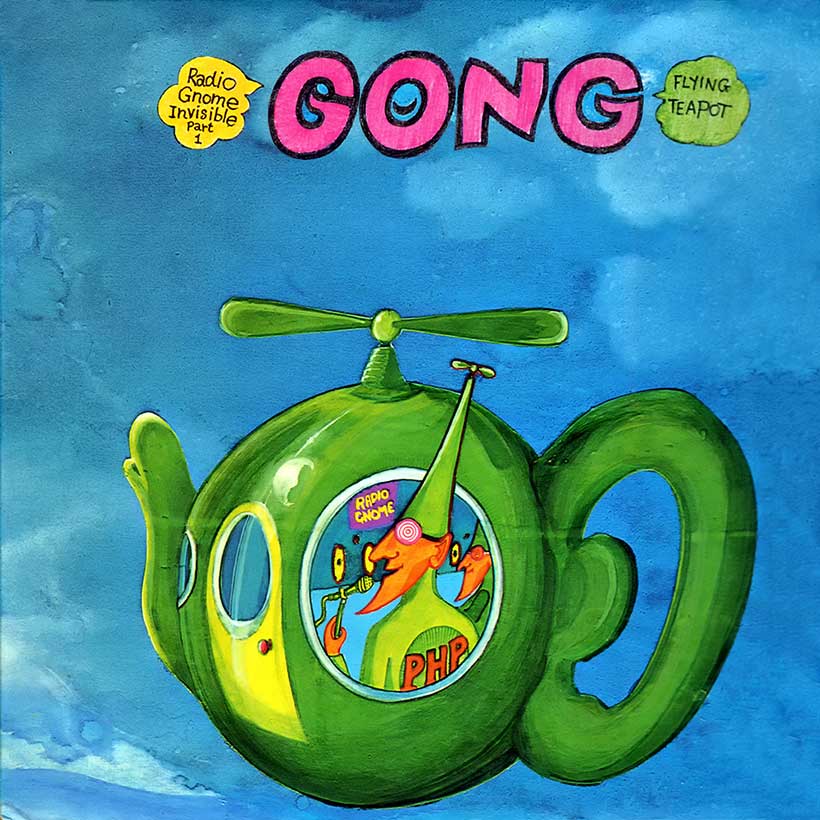The first chapter in Gong’s so-called Radio Gnome Invisible trilogy, Flying Teapot did much to establish the wayward mystique of this most idiosyncratic of bands, giggled and imagined into existence, in and around Paris, by the widely traveled Australian beatnik (and former Soft Machine guitarist) Daevid Allen.
A largely unprecedented combination of sloppily anarchic, communal principles and formidably honed musicality, Gong had – momentarily – stabilized into a nominally functional unit by the time they came to record Flying Teapot at The Manor, Richard Branson’s newly opened residential studio in Shipton-on-Cherwell, Oxfordshire, in the winter of 1972-73.
Listen to Flying Teapot on Apple Music and Spotify.
In addition to the core of Allen (who had given himself the nom-de-Gong of Dingo Virgin), his partner, the “space-whispering” Gilli Smyth (The Good Witch Yoni) and saxophonist/flutist Didier Malherbe (Bloomdido Bad De Grasse), the band now included two highly consequential new arrivals among its number: synthesizer player Tim Blake, who had previously worked for a spell as Gong’s sound mixer, and guitarist Steve Hillage. Both would make key contributions to the Radio Gnome Invisible trilogy – and both would, like Allen himself, secede from the Gong mothership in 1975.
Released, in the UK, on Virgin Records on May 25, 1973, Flying Teapot introduced Allen’s charmingly abstruse Radio Gnome narrative: a full-fat indulging of the Gong mythology hinted at on 1971’s Camembert Electrique. The album title alluded to the philosopher Bertrand Russell’s “cosmic teapot” analogy – coined to highlight the perceived irresponsibility of those who make apparently baseless religious claims – in which Russell provocatively suggested that “nobody can prove that there is not, between the Earth and Mars, a china teapot revolving in an elliptical orbit.”
As for Flying Teapot’s nominal plot, rock scribe Mark Paytress described it as being “primarily concerned with the growing consciousness of earthling Zero The Hero” – though, as John Platt, editor of the much-loved Comstock Lode fanzine, has noted, Allen’s intent in constructing the Gong mythology, and forming the band in the first place, stemmed in large part from a pursuit of “the attainment of higher states of being and communication.”
If it’s debatable as to how many Gong fans actually understood (or even bothered to follow) the narrative, it’s equally arguable as to how much it really mattered. For many of the Gong faithful in the mid-70s, “The Pothead Pixies” carried a directly symbolic significance as a canny relative of product placement and a convenient freak flag. If you smoked pot, you were in the tribe.
And the music? It’s a delightful, beaming burble of left-turning, cosmic-funk riffs (“Radio Gnome Invisible”), cackling, erotic whispers (“Witch’s Song/I Am Your Pussy”), shimmering nebulas of glissando guitar (the title track), and contrails of electronica (“The Octave Doctors And The Crystal Machine”). Well, what else could it be?



